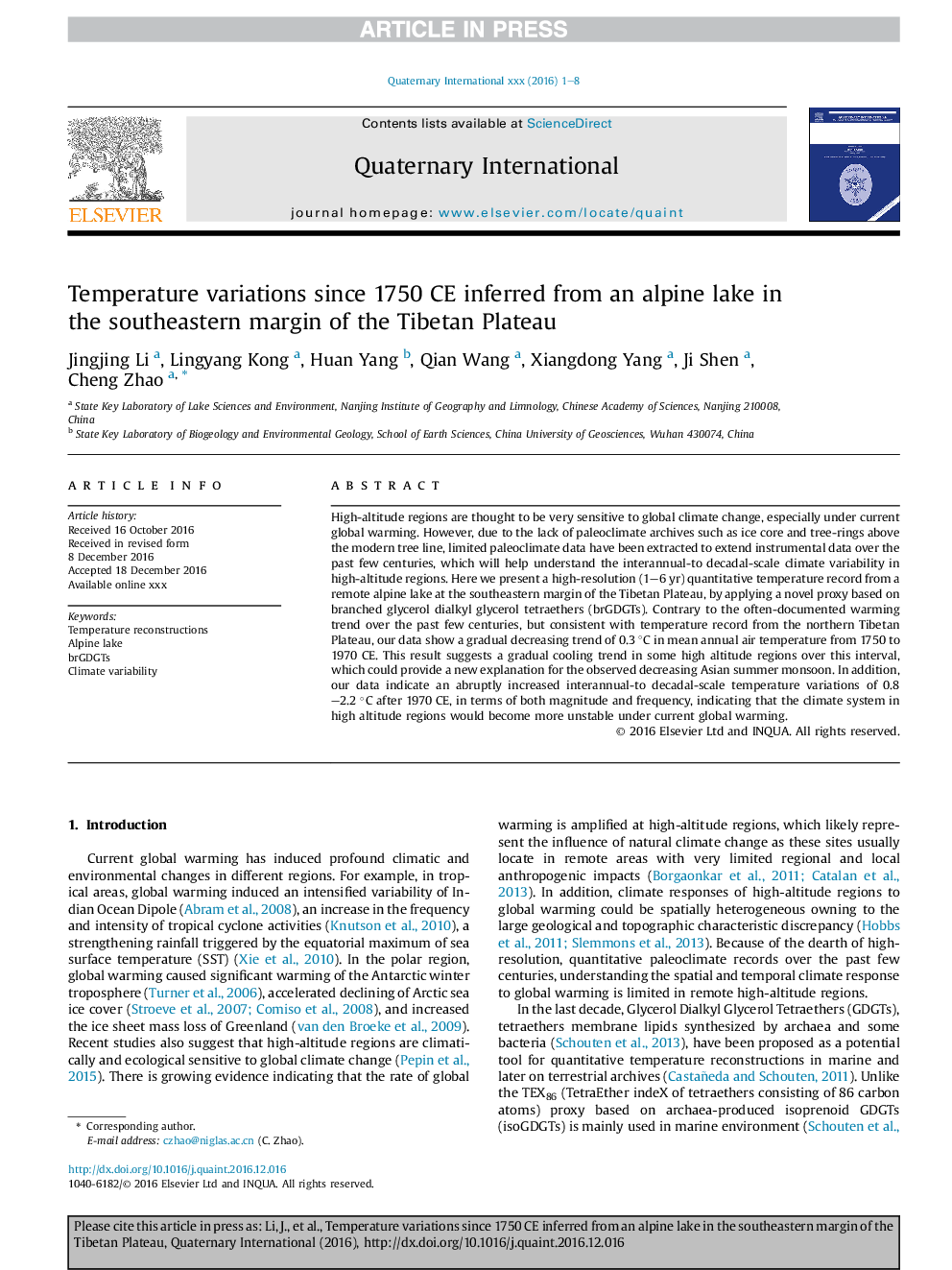| Article ID | Journal | Published Year | Pages | File Type |
|---|---|---|---|---|
| 5113540 | Quaternary International | 2017 | 8 Pages |
Abstract
High-altitude regions are thought to be very sensitive to global climate change, especially under current global warming. However, due to the lack of paleoclimate archives such as ice core and tree-rings above the modern tree line, limited paleoclimate data have been extracted to extend instrumental data over the past few centuries, which will help understand the interannual-to decadal-scale climate variability in high-altitude regions. Here we present a high-resolution (1-6 yr) quantitative temperature record from a remote alpine lake at the southeastern margin of the Tibetan Plateau, by applying a novel proxy based on branched glycerol dialkyl glycerol tetraethers (brGDGTs). Contrary to the often-documented warming trend over the past few centuries, but consistent with temperature record from the northern Tibetan Plateau, our data show a gradual decreasing trend of 0.3 °C in mean annual air temperature from 1750 to 1970 CE. This result suggests a gradual cooling trend in some high altitude regions over this interval, which could provide a new explanation for the observed decreasing Asian summer monsoon. In addition, our data indicate an abruptly increased interannual-to decadal-scale temperature variations of 0.8-2.2 °C after 1970 CE, in terms of both magnitude and frequency, indicating that the climate system in high altitude regions would become more unstable under current global warming.
Related Topics
Physical Sciences and Engineering
Earth and Planetary Sciences
Geology
Authors
Jingjing Li, Lingyang Kong, Huan Yang, Qian Wang, Xiangdong Yang, Ji Shen, Cheng Zhao,
